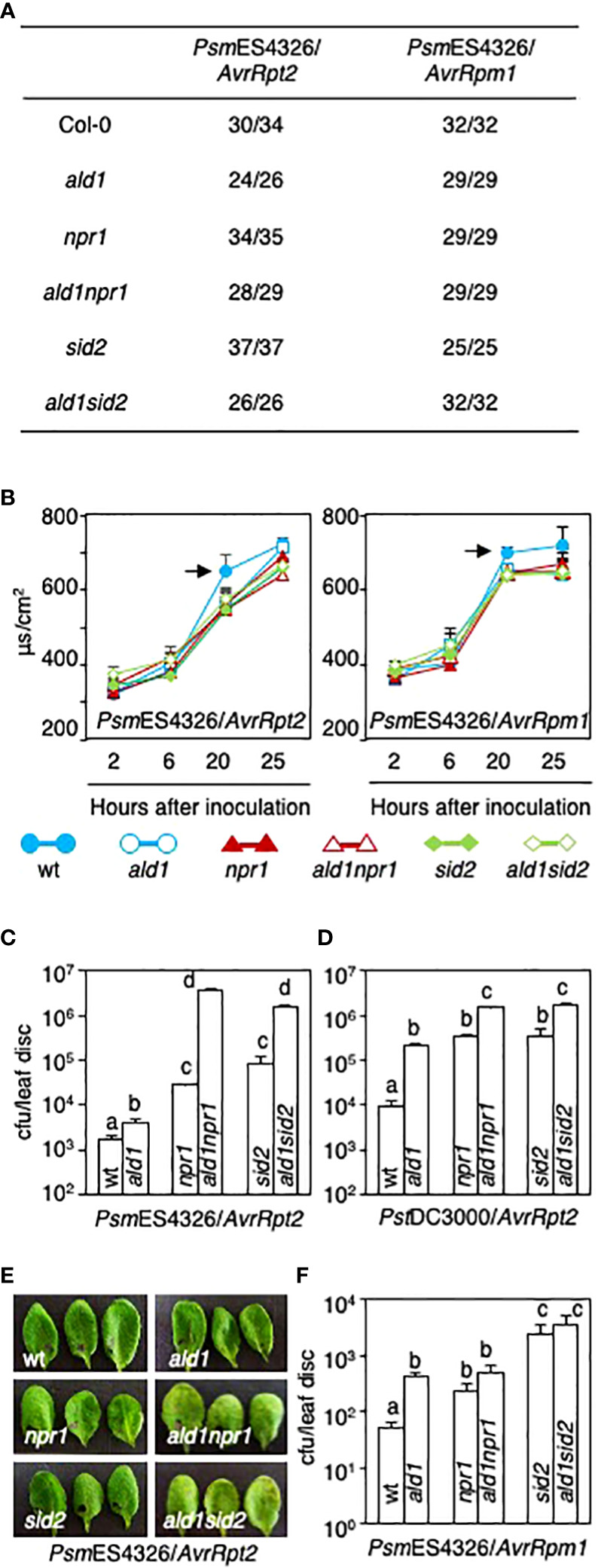Figure 3.

Both ald1npr1 and ald1sid2 mutants show susceptibility in response to avirulent derivatives of Pseudomonas carrying AvrRpt2, but not AvrRpm1. (A) The number of leaves exhibiting HR out of the number of leaves infected with two different avirulent derivatives, PsmES4326/AvrRpt2 or PsmES4326/AvrRpm1 (OD600 = 0.01). (B) Electrolyte leakage from leaves of Arabidopsis after infection with PsmES4326/AvrRpt2 (left panel) or PsmES4326/AvrRpm1 (right panel) (OD600 = 0.05). Data represent the averages with standard deviations (n = 4). Arrows indicate statistically significant differences between WT and mutants (p < 0.01, two-tailed Student’s t-test). The experiments were repeated twice with the same results. (C, D) Pathogen growth in leaves of ald1npr1 and ald1sid2 mutants after PsmES4326/AvrRpt2 infection (C) and PstDC3000/AvrRpt2 infection (OD600 = 0.0001) (D). (E) Symptom development in the leaves of ald1npr1 and ald1sid2 mutants after PsmES4326/AvrRpt2 infection (OD600 = 0.0001). The photos were taken on day 3 after inoculation. (F) Growth of an avirulent derivative, PsmES4326/AvrRpm1, in leaves of Arabidopsis 3 days after inoculation (OD600 = 0.0001). Data (C, D, F) represent the averages with standard errors (n = 8, or 12). Different letters indicate statistically significant differences (p < 0.01, one-way ANOVA). The experiments were repeated more than three times with the same results.
